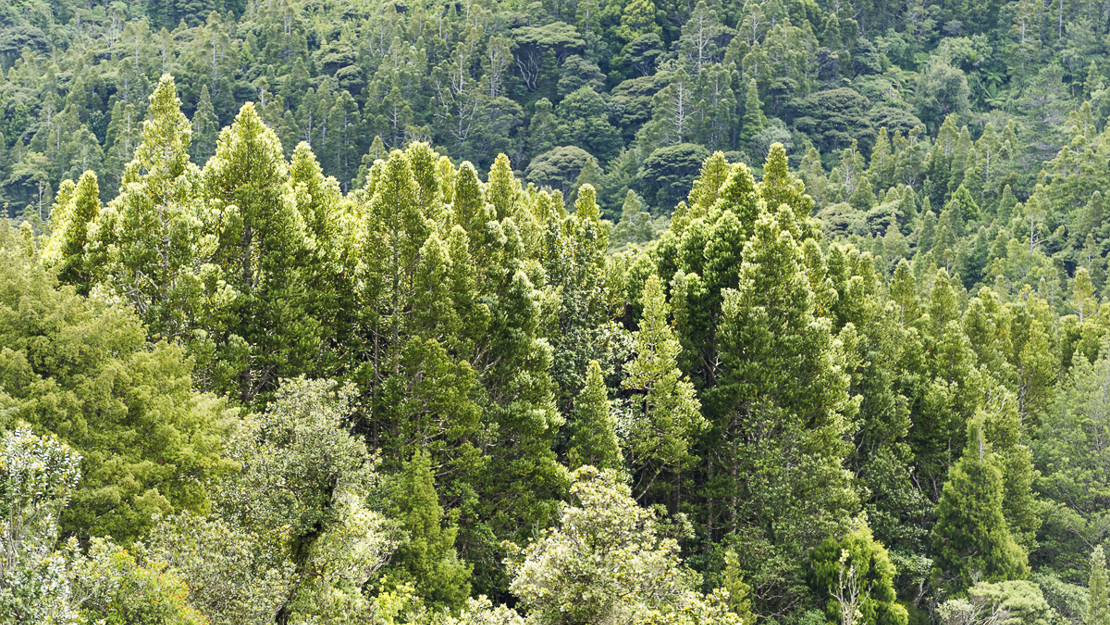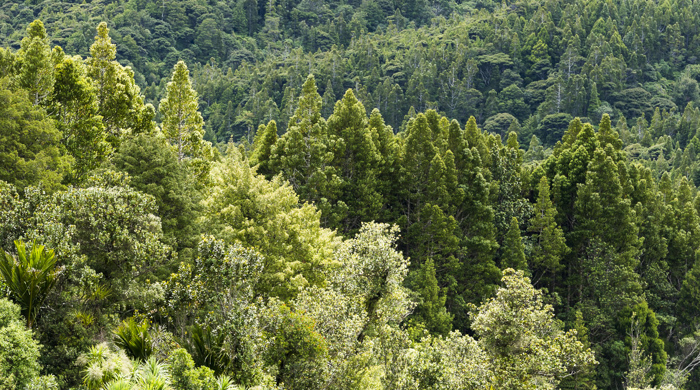Kauri, podocarp, broadleaved forest ecosystem (WF11)
Once widespread across the Auckland region, this warm forest ecosystem contains a range of podocarp and broadleaf trees on different landforms. It is an ideal habitat for birds, bats and lizards thanks to an abundance of fruit and nectar.
Warm forest ecosystem
About this ecosystem
This forest is mostly found on hill-slopes in warm and humid areas. Acidic leached soils are common where kauri occurs while more fertile grainy soils are present in the gullies.
Kauri and other podocarps that are common in this ecosystem are long-lived. Because of this, they require storm-induced disturbance events such as tropical cyclones to create gaps in the canopy and aid regeneration.
This ecosystem is found across the Auckland region in:
- Aotea / Great Barrier Island
- Te Hauturu-o-Toi / Little Barrier Island
- the Waitākere Ranges
- Rodney
- North Shore.

Flora and fauna in this ecosystem
A wide range of trees inhabits this forest type, including:
- the kauri that dominate the ridge-crests and hill-slopes
- broadleaved trees (fruit-bearing trees with large flat leaves) that are common in gullies
- podocarp trees (evergreen trees that don’t lose their leaves) throughout the ecosystem.
These forests are an important habitat for kererū which rely on fruit to breed.
Geckos, kākā and tūī are common here during spring and summer when nectar levels are high.

Threats in this ecosystem
This ecosystem is endangered as a result of historic land-use changes such as clearance and logging.
More recent threats that reduce the health of this ecosystem include kauri dieback and climate change. It is important to always clean your shoes, tires and gear before entering and after leaving a kauri forest.



